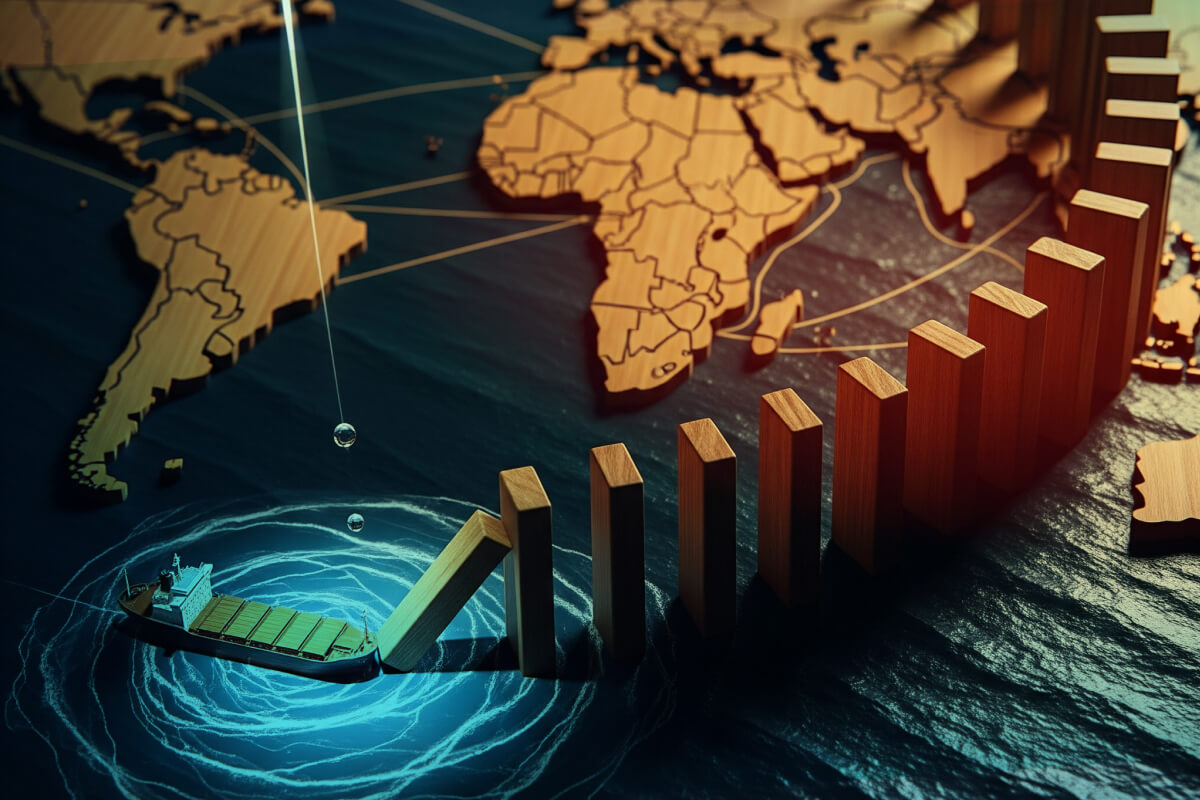Designing for decarbonisation
# How UX can steer a greener course for shipping
How UX can steer a greener course for shipping
I lead the design team at Ninety Percent of Everything, or 90POE, if you're short on time. My company's namesake isn't just a random name chosen because it sounds cool; it's a deeper meaning rooted in the industry we are serving. Ninety percent of everything you own, eat, and use was, at some point, transported on a ship.
Shipping is the invisible backbone of the modern world, and it is also facing its biggest-ever challenge: decarbonisation. We've only got one planet. We've got to stop breaking it.

Image: Conceptual image showing the use of digital tools to manage and optimise complex hardware for decarbonisation
The trillion-dollar engineering problem
I'm talking about decarbonisation. It's the most profound transformation the maritime industry has faced in a century.
The conversation is currently dominated, as it should be, by naval architects, chemical engineers, and international regulators. They are debating the merits of methanol versus ammonia, battery versus hydrogen, and nuclear versus... well, nuclear.
This is a technical, high-stakes conversation. But there is a vital voice missing from that conversation. A factor so vital that its absence could cause the entire multi-trillion-dollar transition to fail: the human user.
"Decarbonisation is not just an engineering problem; it is one of the greatest human-centred design challenges of our time."
Why Design is the missing ingredient
The future of greener shipping will not just be new fuels; it will be new software. This new technology will be placed in the hands of a crew who are already operating under immense pressure.
New fuels and new regulations are worthless if the software designed to manage them is confusing, overwhelming, or simply adds cognitive load. Decarbonisation is not just an engineering problem; it is one of the greatest human-centred design challenges of our time.
Here's how our design principles at 90POE help us tackle this.
Our design principles for a greener fleet
1. Start with the user: Managing the new human pressure
The transition to greener shipping will place an entirely new set of pressures on the crew and shore-based staff. We can't simply hand them new technology without designing for that pressure.
-
For the Chief Engineer: Their job will transform from managing a single, familiar fuel type to orchestrating a complex energy portfolio. They'll need to manage hydrogen fuel cells, battery banks, and methanol, all at the same time. The software we design must be impeccably clear, surfacing critical safety information and simplifying complex operational choices.
-
For the Captain: Their primary focus will shift from just the 'shortest route' to the 'smartest route'. It will become a constant, high-stakes balancing act between the vessel's speed, its new-gen intensity indicator (CII) rating, the weather forecast, and the charterer's commercial demands. They will need tools that help them optimise for efficiency and safety, not just blunt speed.
-
For the Shoreside Operator: Their commercial decisions now have immediate, visible environmental consequences. A last-minute schedule change or a command to "hurry up and wait" at a port isn't just a logistics problem; it can destroy a vessel's efficiency rating for the year. They need tools that surface the long-term environmental and financial cost of every short-term decision.
2. Surface what matters: Delivering actionable insights from a data tsunami
Crews are already drowning in data. The new, 'greener' vessel will become a real-time orchestra of new alerts, complex regulatory calculations.
Drowning our users in this data is not a solution; it's a recipe for alarm fatigue and bad decisions.
Our design must act as a ruthless filter. It must transform this data tsunami into a single, simple, actionable insight. A dashboard that just shows a vessel's current CII rating is a failure. A successful design is one that provides a clear, simple recommendation:
"To remain compliant, we suggest a 5% speed reduction for the next 48 hours."
That is the difference between data and clarity.
3. Think Holistically: Connecting ship and shore
A vessel's emissions are the result of decisions made across an entire commercial ecosystem. A last-minute schedule change from a shoreside Charterer or a port demanding a ship 'hurry up and wait' can destroy a vessel's efficiency rating for an entire year.
Decarbonisation is not just a 'ship problem'; it's a systems problem.
That's why we build software for the entire ecosystem. We must design connected systems that connect ship and shore with a single, shared source of truth. The software must provide every stakeholder with a clear, real-time view of the commercial and environmental impact of their decisions. Only then can the entire chain be optimised, from the broker's desk to the ship's bridge.
The bridge to tomorrow
The ship of the future will be powered by new fuels, but it will be steered by clear, simple, and well-designed software.
Our challenge, as designers in the maritime industry, is to build that bridge between the technology of tomorrow and the human who has to use it today. That is our contribution. That is our responsibility.



